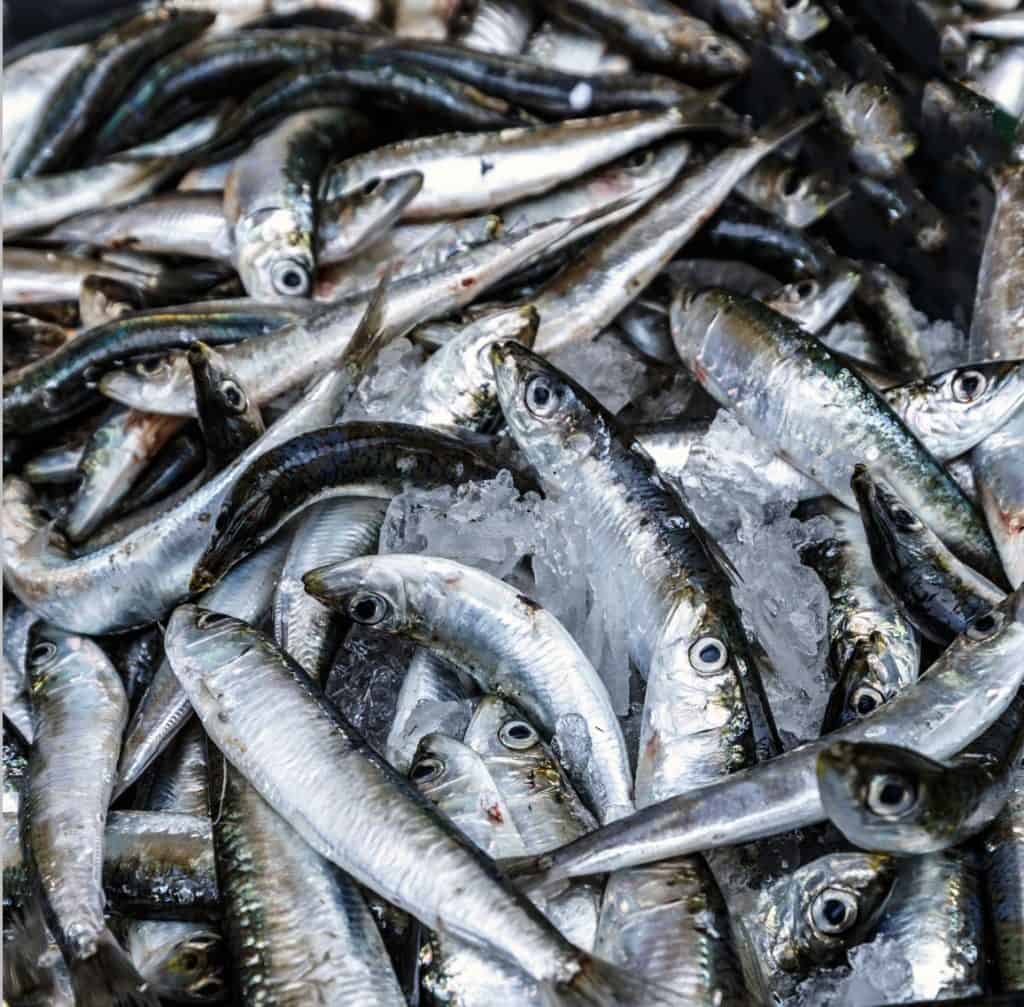When fishing from the docks, a fisherman has quite the unique challenge: get the fish from the watery depths of the lake to the hard wood of the dock without taking a dip and grabbing it yourself. Those who choose to fish from shore or the docks are, quite unfortunately, stuck right where they are.
Whether fishing at night or during the day, fishing off of the pier or dock is no easy task, and landing a keeper can be even harder. While some fish like to skim the surface for bugs and flies, catching big game fish is rarely ever as simple as tying on a topwater.

To catch these monsters, one must search deeper. Wherever you are in the United States or the world, all real anglers know that the key to getting on the big fish is simple: get on the small fish first.
Getting down and dirty with a huge mess of striped bass stacking up on the boat is the dream of just about any fisherman and woman out there, but with the right know-how and the proper materials, you could be breaking your own personal best record much sooner than you’d have ever thought you could.
Using congregated bait fish to your advantage can mean the difference between getting schooled and getting the whole school. Here are a few things you can do to get those little buggers to bring the big game fish right to you, try to keep up.

Underwater Lights
Fishing with underwater lights is a relatively newer advancement in the world of game fishing, but they have proven to be extremely effective with fishermen all around the world.
Before their time, anglers of old would build small fires on their kayaks and canoes as a way of using light to attract fish to the surface. Now that we’re in the 21st century, our technology has advanced to a point beyond anybody’s imagination, and fishing technology is no exception. The way these lights work serves multiple purposes.
These ultra-bright underwater LEDs emit green/blue light into the water when lowered or mounted to a dock beneath the surface. The green and blue light frequencies travel better through the water than white or red light, giving the device the exposure required to reach the desired effect. As this light travels through the water, it illuminates and reflects light off of microorganisms and other microbes, catching the eyes of smaller bait fish seeking a late-night meal. The ensuing feeding frenzy makes for an enticing sight when the big, nasty stripers ease their way out of their hiding spots for a chance at a midnight bite.
When these light fixtures aren’t attracting smaller fish, they can even draw some game fish directly to them as well. In fact, through consistent use over time, game fish will actually begin to recognize the location of the glow light as a good spot to find food, meaning that that next big fish will come for the lights and decide to stick around While these lights are incredibly useful for nighttime fishing, they are much less effective during daytime outings when it is far too bright to consider using.
When it comes to brightness, the more the merrier. Several brands sell their own take on the underwater fishing light game, but one of the most reputable brands and models out there for those looking to dip their feet into light fishing at night is the TIMRAINN 1200 LM.

You can make money by writing about fishing. Here’s how I do it.
In terms of price, this powerful beast will set you back less than $20.00 and is sure to catch plenty of attention with the flip of a switch. Despite having to use them at night, underwater fishing lights work far too well to pass up. If an ultra-bright LED can’t catch the eye of a great big bass, almost nothing else will.
Chumming
This one’s a bit more complicated, so just sit tight. Chumming is the process by which an angler will take the discarded blood, fins, head, scales, and other bodily remains of a previous catch and throw this “chum” back into the water to attract other fish.
Chumming, when legal, can be a very effective tactic when trying to draw in game fish, and it also puts to use the remains of another organism, returning it back to the ecosystem where it can be eaten and decomposed by other living creatures. Chumming, as a method of fishing, is typically seen practiced in ocean waters with fishermen off the coast, however chumming is not limited to ocean fishing.
Freshwater anglers can still use the scent of prey to lure in predator species like bass, walleye, pike, gar, and countless other species. When chumming, it’s best to create a mixture of fish guts and oils that will carry the scent of blood and fish innards through the water as quickly as possible, hoping to catch the attention of whatever lurks below.
To fish, smell is key. Most people probably wouldn’t know this, but fish actually have a very strong, finely-tuned sense of smell that helps them navigate through the water, as well as find food. These noses are not easily-fooled, and chumming doesn’t always work on the first try.
It’s a process that must be repeated in order for the fish to recognize the area as a place to eat. Freshwater fishermen have also been known to throw out handfuls of kernels of corn into the water as a way of chumming and causing a feeding frenzy as well, however corn can be extremely destructive to aquatic wildlife if used in excess. Some states like Utah and Idaho allow anglers to use corn as bait, but prohibit its use as a way of chumming in freshwater tributaries and river systems.
There is a catch to this method of attracting fish (no pun intended), as chumming is not legal everywhere you go. It is very important for all anglers to read and study up on the rules and regulations wherever they decide to fish in an effort to avoid hefty fines and harming the surrounding environment. In some freshwater lakes and rivers, chumming has been banned in the hopes of keeping diseases that accumulate in dead fish carcasses from spreading to the rest of the fish in the ecosystem.
Keeping the natural environment as untouched and pristine as possible is a goal most people strive to reach, and “leave-no-trace” rules like these are put in place as a safeguard for anglers and marine life alike.
De-Icers in Winter
During the bitterly-cold winter months, ice and snow take their toll on the lakes and rivers, and finding a good spot to drop in a line can seem like an impossibility. When ice layers are almost a foot deep, and it looks like your day of fishing is over, never fear, de-icers are here to save the day.
For those who don’t know (or are fortunate enough to live where the cold weather conditions aren’t too overwhelmingly harsh), de-icers are devices that can be placed in a pond or lake that creates movement in the water, preventing the surrounding area from freezing over. This little device has a very important job to do, and can be mounted under the dock and left to sit. Preventing ice from forming around the docks actually serves more than one purpose.
For those up North in the Great Lakes, ice buildup under docks actually causes something called “ice jacking.” Ice jacking is caused when freezing conditions create ice layers that float on the surface to force the support structure of the dock upward, causing it to rise and slowly but surely break over time. At first glance, it wouldn’t seem like ice could really cause that much damage, but it can, and it does. Every year, backyard fishermen’s docks are ravaged by intense exposure to the elements, resulting in hundreds or thousands of dollars in damage.
What’s even worse? The time and effort that must be spent obtaining special government build permits and other nonsense will cost you more time than it will cost your wallet cash. Devices such as this have an important purpose, and getting one can open you up to a whole new world of winterizing and fishing as well. Although they are small, these de-icer machines benefit dock owners by preventing their dock from getting damaged, but it also opens up a little pocket of unfrozen water to drop in a line and fish from. One of the most reputable sources for these life-savers is Kasco, a pond aeration parts and accessories corporation that works to promote healthy pond environments and marine life.
Even during the winter months, those living in extreme regions can keep their docks safe, save themselves thousands in damages, avoid the government formalities, and even create their own little fishing hole.
Aeration
Another key element of successful fishing is a healthy pond or body of water, and something that people don’t seem to think about is the air quality. Air quality of a pond? What difference does it make how many bubbles there are? Believe me, we all know that guy.
Aeration is extremely important to the well-being of any underwater ecosystem as all living creatures need oxygen to survive, and that means fish as well. Whether your dock is in your own personal backyard pond or down by the lake, it’s important to know that the waters you’re fishing are healthy enough to support the fish that you’re there for in the first place. If fishing at a public lake or national recreation area, the aeration levels are already in the hands of experts who know what it takes to make a healthy habitat for living marine creatures.
When fishing off of your own dock, however, it’s an important thing to remember to take care of. Getting enough oxygen is vital for schools of underwater fish, and it’s pretty hard to get anything to take the bait when all of the fish in the pond are dying because they can’t breathe.
Kasco specializes in aeration systems and fountains in private ponds and lakes, and they have many products with excellent customer reviews. Take care of your pond and your fish when fishing off of your dock, they’re sure to put up a good fight.
Rocks, Trees, and Bushes
When fishing from the docks, most people think “the farther out I cast, the better my chances will be.” That is not always the case, and I’ll tell you why. Fish are smart. They can see you when you’re being too obvious, they can feel when you splash around and spook them, but what do they always do when you accidentally blow your cover?
They swim for the bushes. It’s animal instinct to take cover when facing down a predator, and foliage in the surrounding area, including rocks, trees bushes, tall grass, etc can all prove to be good hiding places when a threat presents itself. The landscape of the world beneath the surface is full of nooks and crannies, so it’s important to remember that the most obvious places to fish don’t always pan out. Fish find the calm shallows along the marshy trees of the shoreline to be ideal breeding grounds to lay eggs and raise their young.
These areas, while very shallow, are known breeding grounds for flies, gnats, midges, mosquitoes, and other insects and bugs that make a great meal for big catches. When fishing from the dock, however, finding trees and sandy shallows can be more to handle than you’d think. In the absence of surrounding plants and other hiding holes, one hiding place that seems to be the most obvious and yet overlooked spot is simple: the dock itself. The dock provides shade and shelter for the fish below, allowing them to hide from undesirable predators.
Fishing off the dock can seem hopeless at times, especially when those largemouths have nowhere to hide and they’re nowhere in sight. But always look for these desirable spots near your dock, and you’ll be reelin’ them in off the docks in no time at all.
Fishing off the docks can prove to be both a challenge and a leisure, and whether or not you’re just starting out or a skilled fisherman, the docks are a fantastic place to throw in a line and lie in wait for a chance at the biggest fish in the pond. Who knows, maybe you’re next.
You can make extra income writing about fishing.
P.S. I’d Love Your Support On YouTube


